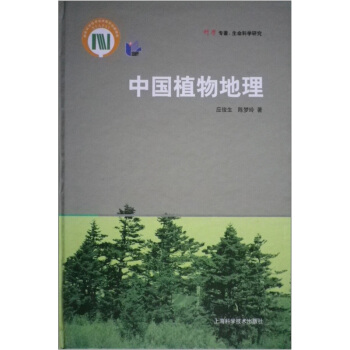

具体描述
内容简介
Research on electronic systems in condensed matter physics is at present developing very rapidly, where the main focus is changing from the "single-particle problem" to the "many-particle problem". That is, the main research interest changed from phenomena that can be understood in the single particle picture, as, for example, in band theory, to phenomena that arise owing to the interaction between many electrons.内页插图
目录
1. The One-Dimensional Quantum Spin Chain1.1 The S = 1/2 XXZ Spin Chain
1.2 The Jordan-Wigner Transformation and the Quantum Kink
1.3 The Bethe Ansatz and the Exact Solution
2. Quantum Field Theory in 1+1 Dimensions
2.1 Bosonization
2.2 Conformal Field Theory
2.3 The Non-linear Sigma Model
3. Strongly Correlated Electronic Systems
3.1 Models of Strongly Correlated Electronic Systems
3.2 Spin-Charge Separation in One Dimension
3.3 Magnetic Ordering in Strongly Correlated Electronic Systems
3.4 Self-consistent Renormalization Theory
4. Local Electron Correlation
4.1 The Kondo Effect
4.2 Dynamical Mean Field Theory
5. Gauge Theory of Strongly Correlated Electronic Systems.
5.1 Gauge Theory of Quantum Anti-ferromagnets
5.2 Gauge Theory of the Doped Mott Insulator
5.3 Gauge Theory of Quantum Hall Liquids
Appendix
A. Complex Functions
A.1 Projection from the z-Plane to the w-Plane
A.2 Contour Integral of f(z) Around the Path C
B. The Variational Principle and the Energy-Momentum Tensor
Literature
Index
前言/序言
用户评价
当我看到这本书的书名——《强关联电子系统中的量子场论》,我脑海中立刻浮现出无数关于微观粒子世界的奇妙设想。我不是物理学专业的学生,但“强关联”这个词语本身就充满了吸引力,它暗示着一种非同寻常的相互作用,一种超越了简单叠加的复杂集体行为。而“量子场论”,更是我一直以来都感到神秘而又强大的理论框架,它以一种极其抽象却又极其精确的方式,描绘着宇宙万物的基本构成和相互作用。我好奇这本书会如何将这两个看似独立却又息息相关的概念联系起来。我设想,它可能会深入探讨在材料科学和凝聚态物理学中,那些电子之间相互作用异常显著的体系,例如高温超导体、重费米子材料等等。在这些系统中,传统的单粒子近似方法可能已经失效,而量子场论的强大工具,如重整化群、路径积分等,或许能够提供解决这些难题的关键。我期待这本书能够不仅仅是理论的堆砌,更能展现出如何运用这些高深的理论工具,去理解和预测这些复杂系统的物理性质,甚至指导新材料的设计。我希望能在这本书中,找到连接抽象数学公式与具体物理现象的桥梁,感受科学探索的严谨与浪漫,即使我无法完全领悟其中的每一个推导,也能因此对物质世界的微观本质有更深刻的理解。
评分在翻阅一本新书时,我的目光立刻被《强关联电子系统中的量子场论》这个书名所吸引。这个书名本身就充满了挑战性与前沿性,暗示着书中将要探讨的物理问题和理论工具的深度。我并非是专门研究这个领域的学者,但对物质世界的奥秘始终抱有强烈的好奇心。我理解,“强关联电子系统”通常指的是那些电子之间的相互作用非常显著,以至于无法采用简单的单粒子近似来描述的体系。这些系统往往展现出许多令人着迷且难以用传统理论解释的现象,比如高温超导、磁性材料的奇特行为等等。而“量子场论”则是一种极其强大的理论框架,它在描述粒子和场相互作用方面有着无与伦比的威力。我非常期待这本书能够在这两者之间架起一座桥梁,用量子场论的语言和工具来深入剖析强关联电子系统的复杂行为。我设想,书中可能会介绍一些重要的量子场论方法,如重整化群、密度泛函理论的进阶应用、或者某些拓扑场论的概念,并展示它们如何在理解和预测强关联材料的性质方面发挥作用。我希望这本书能够给我带来一种全新的视角,让我能够更深入地理解物质世界的微观本质,即使我无法完全掌握所有的数学细节,也能从中获得关于这个前沿领域的深刻洞见。
评分这本书的书名,初读之下,确实让人感到一丝敬畏,甚至有点望而却步。 “强关联电子系统”和“量子场论”,这两个概念在我看来,都属于物理学中最艰深、最抽象的领域之一。我并非直接从事相关研究的学者,但作为一名对科学抱有强烈好奇心的读者,我对那些能够揭示物质世界本质奥秘的理论,始终保持着一份浓厚的兴趣。我设想,这本书的内容,可能是在尝试用一种更为统一和深刻的语言,来描述那些在普通视角下难以捉摸的物理现象。例如,在某些材料中,电子之间的相互作用变得异常强烈,从而导致了许多非经典的物理行为,比如磁性、绝缘性以及更奇特的量子相变。而量子场论,作为描述基本粒子相互作用的强大框架,是否能够为理解这些“强关联”的微观世界提供一种全新的、更具解释力的工具?我脑海中浮现出无数的可能性:也许书中会深入探讨某些著名的强关联模型,如Hubbard模型,并分析如何应用量子场论的方法来求解它们。我期待的,不仅仅是理论的讲解,更是能够看到这些抽象概念如何与实际的物理现象联系起来,如何帮助科学家们理解和预测材料的性质。我希望这本书能够以一种循序渐进的方式,让我这个非专业人士也能领略到这个领域的精妙之处,即使无法完全掌握所有细节,也能对这个前沿研究方向有一个清晰的认知。
评分这本书的封面设计相当引人注目,深邃的蓝色背景上,复杂的量子纠缠的示意图若隐若现,仿佛预示着书中即将展开的奇妙旅程。我并不是一个科班出身的物理学家,更多的是被“强关联电子系统”和“量子场论”这两个词汇所吸引,它们在我脑海中勾勒出一幅极其精妙且充满挑战的科学画卷。想象一下,在极小的尺度下,电子之间不是孤立的个体,而是相互影响、相互纠缠,形成一种集体行为,这种现象本身就足够令人着迷。而量子场论,更是将这种微观世界的描绘提升到了一个全新的高度,将粒子视为场的激发,将相互作用视为场的耦合。我隐约觉得,这本书或许能够为我揭示一个我从未涉足过的物理学前沿,让我窥探到物质最深层次的运行规律。虽然我可能无法完全理解书中的每一个数学推导,但我期待这本书能够给我带来一种全新的视角,让我用一种更深刻、更宏观的眼光去审视那些我们习以为常的物理现象,比如金属的导电性,或者超导体的神秘行为。我希望它能像一位经验丰富的向导,带领我在这个复杂而迷人的理论迷宫中,一点点地拨开迷雾,感受科学的魅力,即使最终只能领略到冰山一角,也已然是一次宝贵的精神洗礼。
评分这本书的书名——《强关联电子系统中的量子场论》,光是听起来就带着一股深邃和前沿的气息。作为一名对物理学有着浓厚兴趣但并非直接研究此领域的研究者,我立刻就被吸引住了。我理解,“强关联电子系统”通常指的是那些电子之间的库仑相互作用远大于其动能的系统,这类系统往往表现出许多非常规的物理性质,例如磁性、超导性以及复杂的电荷和自旋序。而“量子场论”则是描述粒子和相互作用的普适理论框架,它在描述高能物理和凝聚态物理中都扮演着核心角色。我好奇这本书将如何把这两个概念结合起来,去解析那些单粒子理论难以解释的现象。我设想,书中可能会涉及一些非常精妙的数学技巧和理论工具,比如如何利用量子场论的方法来处理多体问题,如何通过引入有效的场论来描述宏观系统的集体激发。我期待这本书能够以一种既严谨又不失趣味的方式,带领读者走进这个复杂的理论世界,揭示强关联现象背后的深层物理机制。我希望它能让我对那些奇特的材料性质有更深刻的理解,并且能够体会到量子场论在解决凝聚态物理难题时的强大力量。
评分书是正版,包装业很仔细
评分活动时买的,物美价廉,纸质不错,是正版
评分凝聚态物理的研究对象除晶体、非晶体与准晶体等固相物质外还包括从稠密气体、液体以及介于液态和固态之间的各类居间凝聚相,例如液氦、液晶、熔盐、液态金属、电解液、玻璃、凝胶等。经过半个世纪的发展,目前已形成了比固体物理学更广泛更深入的理论体系。特别是八十年代以来,凝聚态物理学取得了巨大进展,研究对象日益扩展,更为复杂。一方面传统的固体物理各个分支如金属物理、半导体物理、磁学、低温物理和电介质物理等的研究更深入,各分支之间的联系更趋密切;另一方面许多新的分支不断涌现,如强关联电子体系物理学、无序体系物理学、准晶物理学、介观物理与团簇物理等。从而使凝聚态物理学成为当前物理学中最重要的分支学科之一,从事凝聚态研究的人数在物理学家中首屈一指,每年发表的论文数在物理学的各个分支中居领先位置。目前凝聚态物理学正处在枝繁叶茂的兴旺时期。并且,由于凝聚态物理的基础性研究往往与实际的技术应用有着紧密的联系,凝聚态物理学的成果是一系列新技术、新材料和新器件,在当今世界的高新科技领域起着关键性的不可替代的作用。近年来凝聚态物理学的研究成果、研究方法和技术日益向相邻学科渗透、扩展,有力的促进了诸如化学、物理、生物物理学和地球物理等交叉学科的发展。
评分书写的不错,物理内容丰富,需要有场论基础,读起来很流畅。
评分研究凝聚态物质的原子之间的结构、电子态结构以及相关的各种物理性质。研究领域包括固体物理、晶体物理、金属物理、半导体物理、电介质物理、磁学、固体光学性质、低温物理与超导电性、高压物理、稀土物理、液晶物理、非晶物理、低维物理(包括薄膜物理、表面与界面物理和高分子物理)、液体物理、微结构物理(包括介观物理与原子簇)、缺陷与相变物理、纳米材料和准晶等。
评分帮同事买的,他觉得很经典的书
评分研究凝聚态物质的原子之间的结构、电子态结构以及相关的各种物理性质。研究领域包括固体物理、晶体物理、金属物理、半导体物理、电介质物理、磁学、固体光学性质、低温物理与超导电性、高压物理、稀土物理、液晶物理、非晶物理、低维物理(包括薄膜物理、表面与界面物理和高分子物理)、液体物理、微结构物理(包括介观物理与原子簇)、缺陷与相变物理、纳米材料和准晶等。
评分汉语中“凝聚”一词是由“凝”字双音演化而来的。“凝”在东汉许慎的“说文解字”一书中同“冰”,指的是水结成冰的过程。可见我们的祖先最初对凝聚现象的注意可能始于对水的观察,特别是水从液态到固态的现象。英语的condense来源于法语,后者又来源于拉丁文,指的是密度变大,从气或蒸汽变液体。看来西方人对凝聚现象的注意可能始于对气体的观察,特别是水汽从气态到液态的现象。这是很有意思的差别,大概与各自的古代自然生活环境和生活习惯有关。不过东西方二者原始意义的结合,恰恰就是今天凝聚态物理主要研究的对象—液态和固态。当然从科学的含义上来说,二者不是截然分开的。所以凝聚态物理还研究介于这二者之间的态。例如液晶等。液态和固态物质一般都是由量级为10^23的极大数量微观粒子组成的非常复杂的系统。凝聚态物理正是从微观角度出发,研究这些相互作用多粒子系统组成的物质的结构、动力学过程及其与宏观物理性质之间关系的一门学科。
评分强关联电子系统中的量子场论,内容很出色,而且简单易懂,日本人写的书都这个特点,强烈推荐。
相关图书
本站所有内容均为互联网搜索引擎提供的公开搜索信息,本站不存储任何数据与内容,任何内容与数据均与本站无关,如有需要请联系相关搜索引擎包括但不限于百度,google,bing,sogou 等
© 2025 book.cndgn.com All Rights Reserved. 新城书站 版权所有










![计算物理学导论(第2版) [An Introduction to Computational Physics(Second Edition)] pdf epub mobi 电子书 下载](https://pic.qciss.net/10914291/e1513ce6-1b24-4797-9b8b-ae476a1df223.jpg)


![植物系统学(全彩色)(原著第2版)(导读版) [Plant Systematics(Second Edition)] pdf epub mobi 电子书 下载](https://pic.qciss.net/10944499/1044fb45-377c-4927-8632-1bf06b268abc.jpg)



![中国区域海洋学:物理海洋学 [Regional Oceanography of China Seas:Physical Oceanography] pdf epub mobi 电子书 下载](https://pic.qciss.net/11037140/rBEDilADv7EIAAAAAADGryrRoHcAAEBvwPih4oAAMbH396.jpg)


